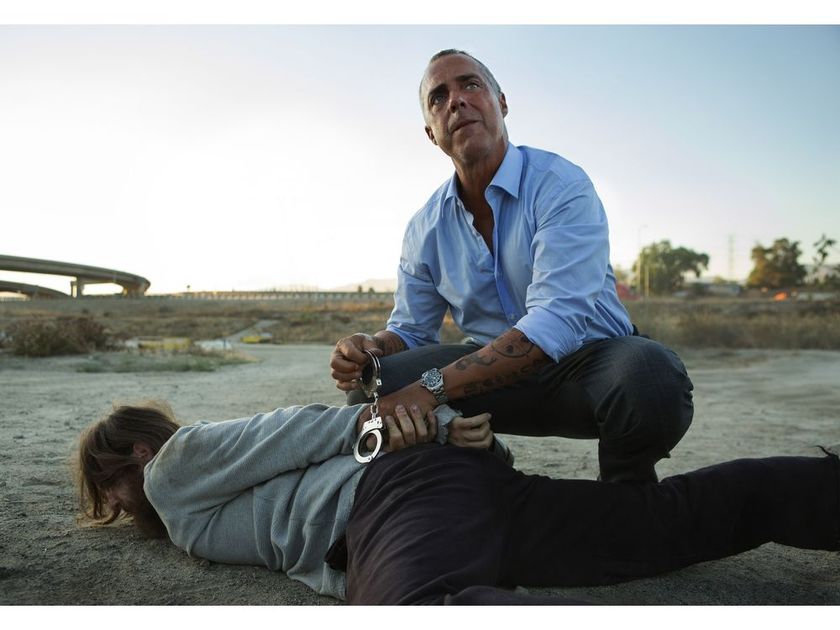 This month's Round Robin Blog Hop is about - How do you ensure a story has a good beginning, a satisfying ending, and good continuity in between?
This month's Round Robin Blog Hop is about - How do you ensure a story has a good beginning, a satisfying ending, and good continuity in between?
My initial answer to this question is a lot of hard work and clear-sighted editing. Although up to now all my published works have been written more or less by the seat of my pants, I always had a very clear idea of where and how the book was going to end. But getting sidetracked getting there was pretty easy. I’m guessing that plotting, the more detailed the plotting, would be less likely to require a vicious pruning when the edits begin, but either way, pruning is required. More about that later…
My beginnings are usually pretty clear in my mind long before I start writing. Whenever a brilliantly seductive story idea comes to me, it usually arrives in the form of a detailed opening scene. I have a whole file filled with such scenes that I write down as soon as they come to me including all the details that I see in my mind and adding notes on where the story might go from there. When I’m ready to take one of these ideas and run with it, I  start by fleshing out my main character or characters with in-depth backstories. Over the years I’ve collected a few different character questionnairs that help me discover who these people are, where they came from, what they want most, what they fear and who they love or have loved in the past. Then I’m ready to write. I put my characters in the opening scene and let them run with it. Sometimes that opening scene is just as compelling as it was when I first had the idea. Sometimes it takes some serious repair.
start by fleshing out my main character or characters with in-depth backstories. Over the years I’ve collected a few different character questionnairs that help me discover who these people are, where they came from, what they want most, what they fear and who they love or have loved in the past. Then I’m ready to write. I put my characters in the opening scene and let them run with it. Sometimes that opening scene is just as compelling as it was when I first had the idea. Sometimes it takes some serious repair.
 One of the things I find most helpful in avoiding a sagging middle and filling in gaps from the opening to the closing of the book is my wonderful brainstorming group, the Sandy Scribblers. We meet once a month (Although they are always there via email to jump in with suggestions, opinions and answers along the way.) Our meetings are pretty losely organized and we each get our share of meeting time to discuss where we are with our story and how it’s developing. Even if no one has any real input, just verbalizing out loud what’s going on in my story often helps me see gaping holes that I know I need to work on when I get home. Other times I am struggling with some aspect of the story, or a character development issue and I toss my delimna out for the group. It’s amazing the ideas that come when four creative minds start throwing thoughts and what-ifs out there and reacting to each other. Those days I scribble notes like crazy and come home with the bit between my teeth and ready to run.
One of the things I find most helpful in avoiding a sagging middle and filling in gaps from the opening to the closing of the book is my wonderful brainstorming group, the Sandy Scribblers. We meet once a month (Although they are always there via email to jump in with suggestions, opinions and answers along the way.) Our meetings are pretty losely organized and we each get our share of meeting time to discuss where we are with our story and how it’s developing. Even if no one has any real input, just verbalizing out loud what’s going on in my story often helps me see gaping holes that I know I need to work on when I get home. Other times I am struggling with some aspect of the story, or a character development issue and I toss my delimna out for the group. It’s amazing the ideas that come when four creative minds start throwing thoughts and what-ifs out there and reacting to each other. Those days I scribble notes like crazy and come home with the bit between my teeth and ready to run.
 Endings need to leave the reader feeling satisfied. In a romance it has to be happy ever after. (And never kill the family dog.) In a suspense or adventure, your protagonist needs to have overcome all the obstacles you threw in his or her way in a believable way and the bad guy vanquished – if not dead. In this kind of series, the disastert the hero or heroine struggled througout the book to avert must be averted but the bad guy might live to fight another day in
Endings need to leave the reader feeling satisfied. In a romance it has to be happy ever after. (And never kill the family dog.) In a suspense or adventure, your protagonist needs to have overcome all the obstacles you threw in his or her way in a believable way and the bad guy vanquished – if not dead. In this kind of series, the disastert the hero or heroine struggled througout the book to avert must be averted but the bad guy might live to fight another day in  the next book. Mysteries must be unravelled and Who-done-its revealed even if the protagonist (in a series) carries his or her personal demons forward into the next book. Whatever your genre, the best endings leave the reader scrambling to see if you’ve another book out that they haven’t read yet.
the next book. Mysteries must be unravelled and Who-done-its revealed even if the protagonist (in a series) carries his or her personal demons forward into the next book. Whatever your genre, the best endings leave the reader scrambling to see if you’ve another book out that they haven’t read yet.
How do I make sure all these things happen?
 Once I am done with my first draft, I nearly always have a raft of things I already know I need to fix, add, delete or change, but I set the story aside for a few days and embark on something unrelated. Then I take that notebook of fixes and do my first big revision. Now it’s time to send the manuscript out to my beta readers. They aren’t necessarily doing a detailed critique, although sometimes they do that too. What they are doing is looking for that BAM! Beginning, the continuity and the satisfying ending. And they are honest with me about their reactions, and I’m back to the editing and that pruning I mentioned earlier. I might have some wonderfully, cleverly, brilliant passages, sparkling dialog or scenes I thought anyone would just fall into and feel like they were there. But if my beta readers tell
Once I am done with my first draft, I nearly always have a raft of things I already know I need to fix, add, delete or change, but I set the story aside for a few days and embark on something unrelated. Then I take that notebook of fixes and do my first big revision. Now it’s time to send the manuscript out to my beta readers. They aren’t necessarily doing a detailed critique, although sometimes they do that too. What they are doing is looking for that BAM! Beginning, the continuity and the satisfying ending. And they are honest with me about their reactions, and I’m back to the editing and that pruning I mentioned earlier. I might have some wonderfully, cleverly, brilliant passages, sparkling dialog or scenes I thought anyone would just fall into and feel like they were there. But if my beta readers tell  me they don’t move the story forward and dragged them down, they have to go. Clip! Clip! If I’ve got big holes where my readers didn’t get why my hero did this, or my heroine thought that, then I know I left stuff out that my reader needed. Or maybe I need to rethink what my hero did or my heroine thought. Maybe it doesn’t make sense and I need to figure out why. Time to go back and add the things I’d skipped blithely over because I was too close to the story. It’s a matter of seeing the forest for the trees.
me they don’t move the story forward and dragged them down, they have to go. Clip! Clip! If I’ve got big holes where my readers didn’t get why my hero did this, or my heroine thought that, then I know I left stuff out that my reader needed. Or maybe I need to rethink what my hero did or my heroine thought. Maybe it doesn’t make sense and I need to figure out why. Time to go back and add the things I’d skipped blithely over because I was too close to the story. It’s a matter of seeing the forest for the trees.
If an author is honest about their work, they can read their own book and ask themselves as they go, “Does this scene really drive the plot forward?” “Does it tell the reader something they really need to know?” Or, “Are these wasted words, however cleverly written?” It’s probably a little harder to ask yourself if this beginning grabs you and won’t let go because it obviously grabbed you enough to devote all those hours to writing the rest of the story, but ask yourself, if this was a book on a shelf I was thinking about buying, would I put the book down after reading those first few paragraphs? Or would I head to the cashier with it? Be brutal with your answers because the readers will be. There are millions of books vying for their attention so if you haven’t really, REALLY grabbed them in that first few paragraphs, they’ll never find out how wonderful the rest of the story turned out.
 Wonder how these other authors get their beginnings, middles and endings right? Check them out.
Wonder how these other authors get their beginnings, middles and endings right? Check them out.
Anne de Gruchy
Marci Baun
Judith Copek
Margaret Fieland
Dr. Bob Rich
A.J. Maguire
Beverley Bateman
Rhobin L Courtright